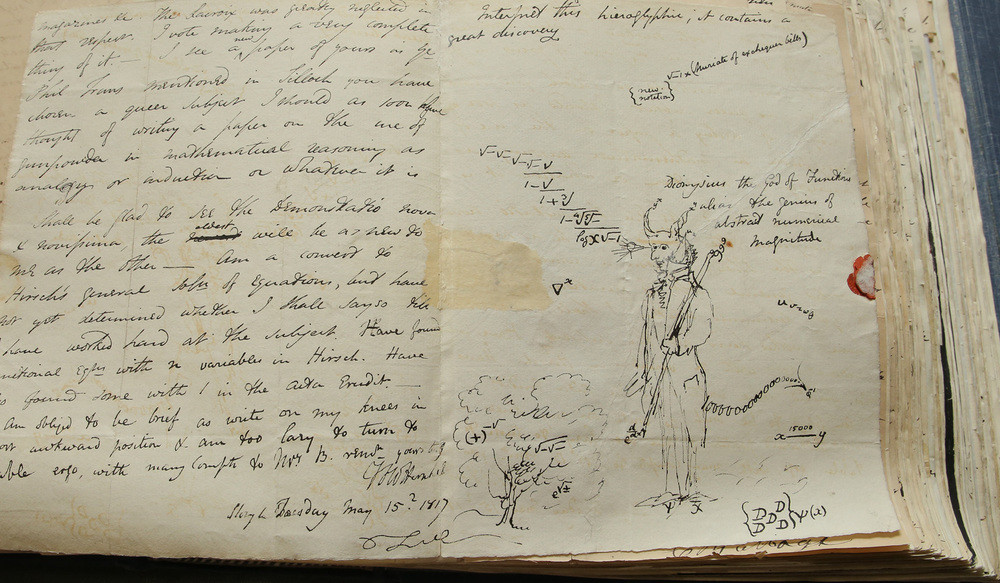The Puzzle:
Source material taken from here
As discussed on Numberphile, here is John Herschel's doodle, sent to his friend Charles Babbage.
John H.
John Herschel was an English polymath, mathematician, astronomer, chemist, inventor, and experimental photographer, who also did valuable botanical work. Herschel originated the use of the Julian day system in astronomy. He named seven moons of Saturn and four moons of Uranus. He made many contributions to the science of photography, and investigated colour blindness and the chemical power of ultraviolet rays; his Preliminary Discourse (1831), which advocated an inductive approach to scientific experiment and theory building, was an important contribution to the philosophy of science.
Info on This Sketch:
Herschel said: "Interpret this hieroglyphic, it contains a great discovery."
The figure at the centre is described as: "Dionysius the God of Functions, alias the genius of abstract numerical magnitude."
Just silliness between two friends, or something more?
Pictures:



(Dionysus, the god of functions, alias, the genius of abstract numerical magnitude)

 (new notation) (Muriate of exchequer bills)
(new notation) (Muriate of exchequer bills)




